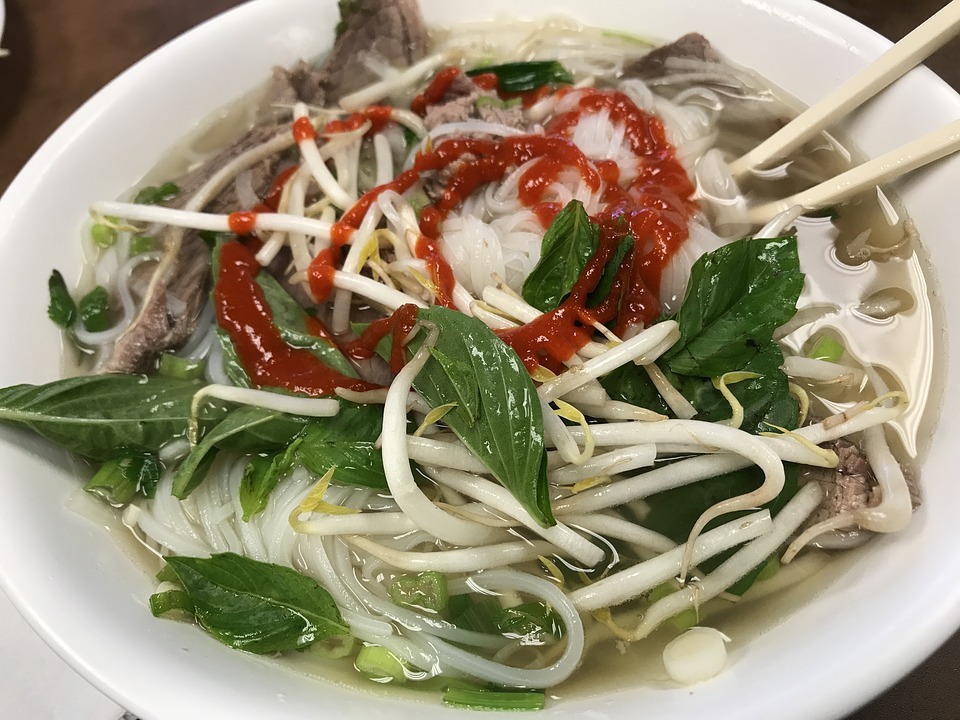Pho is considered to be the staple comfort food in Vietnam. Typical ingredients found in pho are rice noodles, herbs, strips of beef or chicken meat, and broth.
The dish is widely available in stalls and restaurants found in almost every street in the country. Not only is it a very popular food in Vietnam, but millions of people have also eaten it throughout its neighboring countries like the Philippines and Indonesia as well as in faraway places like the United States of America.
Origins
Although there are no official documents pertaining to where pho came from, historians and food experts have developed several theories as to the origins of this noodle dish. Let’s dive right into the most popular story surrounding the birth of pho.
Pho in Vân Cù
The story of pho’s origins starts in North Vietnam at Vân Cù, a village located north of Hanoi, Vietnam’s capital city. In that village, people claim that they had eaten the first incarnation of pho even before the French colonized the country.
It is speculated that the sah hoh fun, a kind of rice noodle, was brought from Southern China to North Vietnam during the 1860s. These rice noodles then evolved into the bánh phở, one of the ingredients used in pho today.
French Influence
After the Sino-French War in 1885, the Treaty of Tientsin allowed the French to take control of the northern parts of Vietnam like Tonkin and Annam. During their rule over Northern Vietnam, the French realized that there is a low amount of beef being sold in Vietnamese markets.
Traditionally, Vietnamese people only eat chicken and pork while utilizing cows as beasts of burden, which are animals that are domesticated and tasked to do manual labor.
The French then introduced North Vietnam to the pot-au-feu, a stew mainly consisting of beef and different kinds of vegetables. Moreover, the French preferred to have only certain parts of beef for their stew, so the scraps were discarded and given to Vietnamese vendors. These vendors started selling these discarded beef parts to people who then mixed the beef scraps to their rice noodle soup, thus creating pho.
Another speculation that relates to the pot-au-feu is that the Vietnamese chefs who cooked for the French borrowed the technique that they learned from cooking pot-au-feu and created a dish that incorporated rice noodles with the stew.
Pho in Southern Vietnam
In 1954, when communism was beginning to rise in North Vietnam, the people who are opposed to this kind of governance left the region and fled to Southern Vietnam. They also brought along with them their recipes to making pho, and with the abundance of herbs in that region, they were able to create a vegetable-heavy variant of pho that we know today as the Saigon pho or phở Nam.
Pho in North America
After the Vietnam War, people fled once again, as communism was now in full control of the country.
While some people sought refuge in other countries, many of them went to North America. Bringing with them their recipes in making pho and other dishes, a few of them started opening restaurants that specialize in Vietnamese cuisine to accommodate the tastes of their fellow refugees.
The tasty Vietnamese dishes caught the attention of Americans, who wanted something new to eat besides the typical food found in the country. As Vietnamese cuisine became more popular in the West, several restaurants started opening branches in different parts of the United States.
One of the restaurants that have mainly benefitted from Vietnamese cuisine’s popularity is Phở Hòa, the largest pho restaurant chain in the US. In present time, this restaurant chain has over 70 branches not only in the US but also in Canada, South Korea, Taiwan, Malaysia, the Philippines, and Indonesia.
Northern Pho vs. Saigon Pho
There are over a hundred varieties of pho available today, but none is as famous as the Northern pho and Saigon pho.
There have been a lot of arguments in which style of pho is better. Northern pho, also known as phở Bắc, is a much simpler style pho as it usually only has chopped green onions, garlic, cilantro, and strips of beef contained within its broth.
Saigon pho, however; has almost all of the ingredients that the Northern pho has, but you will be given a basket full of bean sprouts and fresh herbs that you can add to the soup. Also, restaurants that serve Saigon pho provide different sauces like hoisin sauce and Sriracha sauce for you to add extra flavor to the pho.
In a sense, Saigon pho is the customizable version of pho, while the Northern pho is much more traditional.
Several purists may say that the Northern pho is the only way to eat the dish, but some will argue that Saigon pho is the variant that brought the bowl into the limelight and should be considered as important as the Northern pho. Whichever way people choose to eat pho, whether without any herbs or even without any meat, there is still a sense of comfort and satisfaction given by the dish in each bite and slurp.

